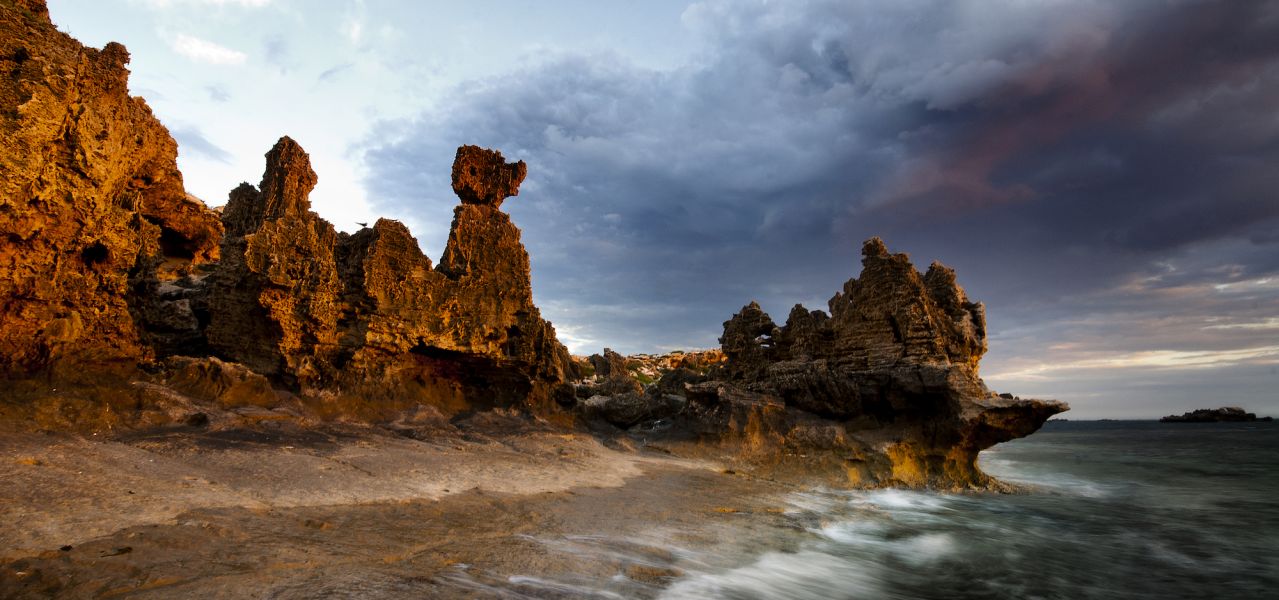The marine environment of the Shoalwater Islands Marine Park is rich and diverse, teeming with a wide variety of marine life and habitats.
Rocky Shores
The coastline of the marine park is characterized by rocky shores composed of limestone outcrops, which provide habitat for a diverse range of intertidal species such as crabs, mollusks, and seaweed, along with breeding and nesting grounds for seabirds and Osprey. These rocky formations can vary in size and shape, ranging from small rock platforms to dramatic cliffs. Being prone to erosion by water, the islands feature the formation of caverns and other karst features.

Seagrass Meadows
Seagrass meadows are found extensively across the shallow coastal waters throughout the Marine Park, including the sheltered bays, lagoons, and channels around Penguin, Bird, Seal and Shag Islands. Seagrass species commonly found in the area include Posidonia spp., Amphibolis spp., and Halophila spp. These meadows provide critical refuges for juvenile fish, crustaceans, mollusks, and other invertebrates, as well as habitat for sea turtles. They are also an extremely important mechanism for capturing and storing carbon dioxide from the atmosphere through photosynthesis. The organic matter produced by seagrasses is deposited in the sediments below, where it can be stored for long periods of time, helping mitigate climate change by sequestering carbon.

Coastal Vegetation
The islands within the Marine Park, are primarily composed of limestone, formed from the remains of marine organisms like shells and coral. Over millions of years, these materials compacted and cemented to form solid rock. Upon this solid rock, plants such as beach spinifex (Spinifex longifolius), coastal pigface (Carpobrotus rossii), coastal wattle (Acacia rostellifera) thrive, along with shrubs such as moonah (Melaleuca lanceolata), banksias, and sheoaks (Allocasuarina spp.). In Spring, species of wildflowers are a highligth for visitiors to Penguin Island, including pink-flowered Rottnest Island Daisies, orchids, and other native flowers.

